Four Suffolk railway stations – Needham Market, Saxmundham, Somerleyton and Westerfield – have received ‘Wildlife Friendly’ accreditation, recognising the work of community volunteers to improve biodiversity and support nature.
Greater Anglia has partnered with the region’s Wildlife Trusts to formally recognise the achievements of its volunteer ‘station adopters’ to create wildlife havens at stations across its network through the new Greater Anglia Wildlife Friendly Stations Accreditation Scheme.
The four stations became the first in Suffolk to receive the awards, following assessment by a Suffolk Wildlife Trust Conservation Officer to determine how well they support local flora and fauna.
Each assessment also offers tips and advice for how to make the stations more wildlife friendly and the reports can also be used as examples of best practice to help spread good ideas around all Greater Anglia stations.
Each station is looked after by a team of volunteer ‘station adopters‘ – members of the community who work with Greater Anglia to improve their local rail station for community benefit – who have focused on creating wildlife friendly areas to help support fragile local wildlife populations.
- At Westerfield station, adopters Sandy Burn, Yvonne Maynard and Laura Hadgraft have transformed 72 square metres of land alongside the platform into a beautiful floral haven, full of pollinator-friendly planting and complete with a large bee and insect refuge. This work has been supported by the East Suffolk Lines Community Rail Partnership.
- At Saxmundham, a large wildflower area has been established following the refurbishment of the station building following fire damage. This work has been supported by the East Suffolk Lines Community Rail Partnership.
- Somerleyton station adopter Sue Cox has planted a buckthorn hedge to support the rare Brimstone butterfly which relies on this plant as it is the only food source for its caterpillars. The work of the volunteers at Somerleyton is also supported by the Wherry Lines Community Rail Partnership.
- Volunteers at Needham Market have created a wildflower area and an attractive ‘stumpery’ formed with old tree trunks which provide a refuge for insects.
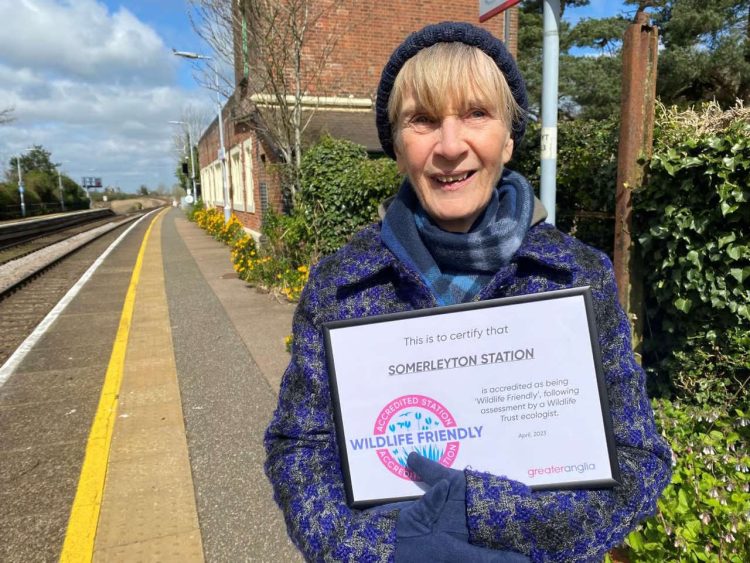
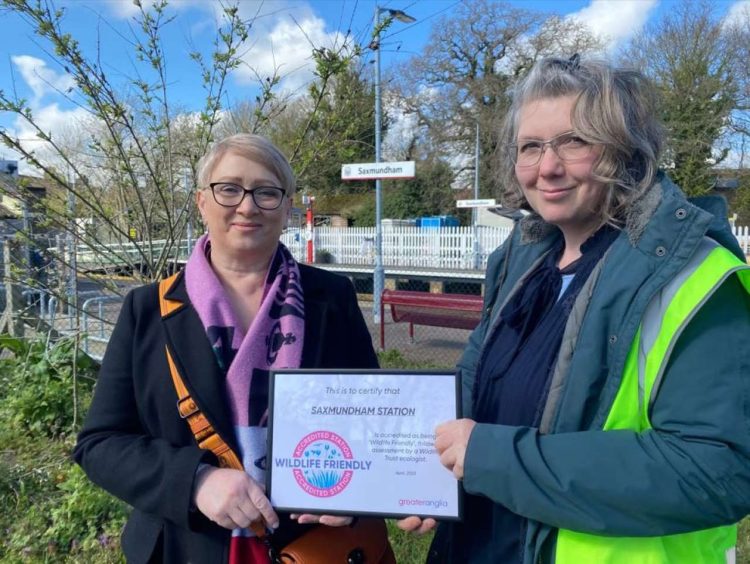
Greater Anglia believes that its stations are increasingly becoming havens for local wildlife thanks to the efforts of over 300 volunteers who last year transformed over 7,400 square metres of land into thriving wildlife gardens.
In a recent survey, its station adopters reported more than 200 different species visiting their stations, including many different types of butterflies as well as bees, slow worms, bats, foxes, toads, lizards, deer and many varieties of birds.
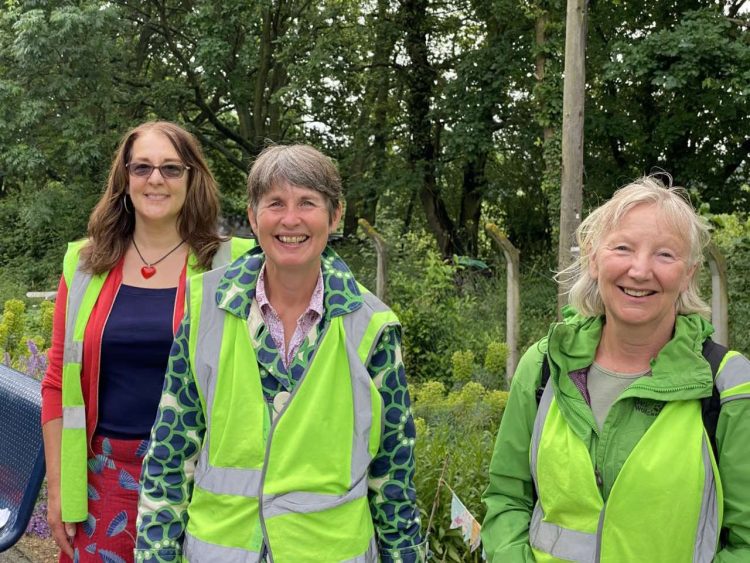
Greater Anglia has joined the rest of the rail industry in pledging to make stations across Britain more sustainable. Action to reduce waste, support local wildlife and cut the carbon footprint of railway stations will be informed by the industry’s Sustainable Stations: Best Practice Guide, which details ways in which train operators can meet this commitment in support of global goals of decarbonisation, reducing waste and supporting local plant and animal life.
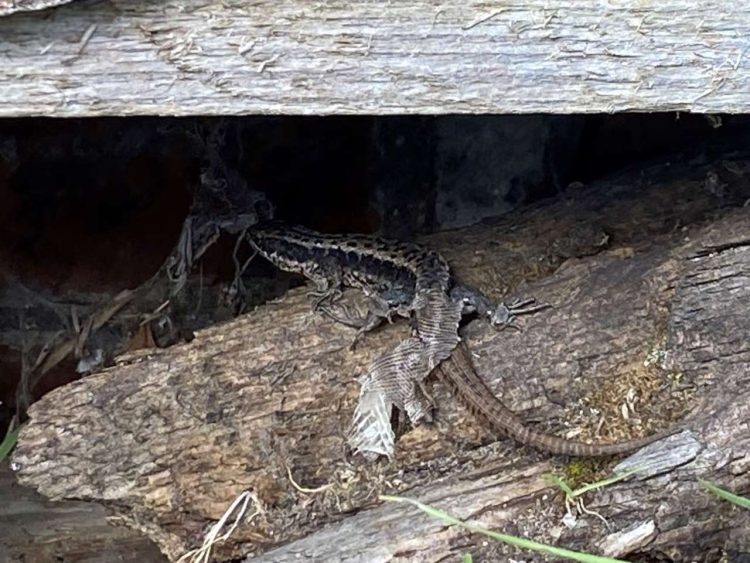
James Hogg, Development Officer at the Norfolk Wildlife Trust who are the lead Trust for the initiative, said: “The alarming decline in the abundance of wildlife and the plight of species under threat means that just protecting the nature we have left is not enough; we need to put nature into recovery, and to do so at scale and with urgency.
“This project with Greater Anglia is a fantastic example of how people can transform nature-poor areas into new nature-rich places – and change the way we think about land, seizing opportunities to help nature outside traditional nature reserves.”
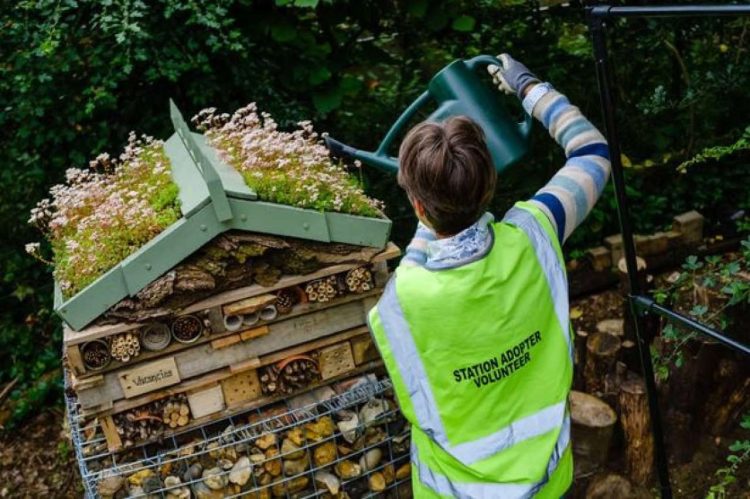
Greater Anglia’s Customer and Community Engagement Manager, Alan Neville, said, “We’re delighted to partner with the region’s wildlife trusts to formally recognise the valuable work of our station adopter volunteers in supporting wildlife and improving their local environment.”
“I’d like to congratulate the volunteers at these stations on receiving this recognition and thank them for the incredible work that are doing that makes each station a wonderful place to be, and also contributes to supporting biodiversity locally.”






Responses